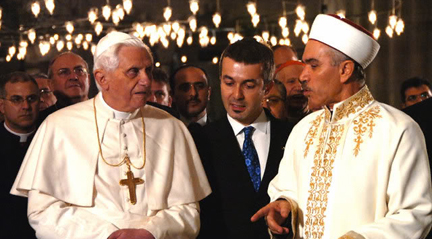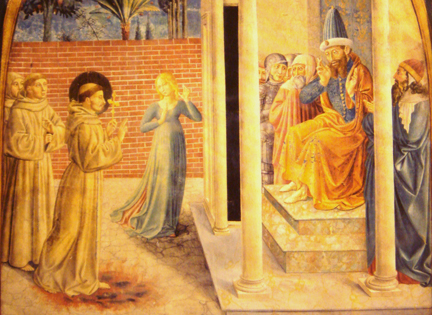
Considering the fact that I have blogged quite a bit on the Templars in the past, I thought I might be obliged to take time out from my book to write something about the reptile, Anders Behring Breivik, who claims some kind of affiliation with the Templars. That turns out to be more Templar baloney.
I am not going to waste much time on this, as his manifesto is revealed to be what one would expect, mostly a cut and paste of any kind of conservatism he could find to justify his racism and his plans for violent revolution. Not that conservative thought leads to the recent events in Norway any more than liberal thought necessarily leads to the dirty deeds of Bill Ayers.
When I first read that Brievik was supposedly a “Christian Fundamentalist,” I thought to myself that he is more than likely some kind of esoteric “Christian.” In fact, he is a Freemason, but that does not explain things either, because Norwegian Freemasonry is a “rectified rite” that has jettisoned the myth about the Templar origins of the Masons.
Brievik has founded his own “church.” It is of a cut and paste construction, just like his manifesto: part Christian, part neopagan Odinist, part Freemason and whatever. I would also add that his church is Nazi as well, but he says that Nazism has been so demonized that “it is pointless to try to resurrect it in any way or form.” His interest in Christianity is about cultural unity for Europe through the common patrimony that Christianity offers. He says he is not interested in a relationship with Jesus. He is interested in his Norse and European cultural and racial heritage. And kill anyone who gets in the way.
In spite of his claim that he is a member of a larger cell, I will be surprised if that turns out to be true. I think he is a lone nutbag, at least in terms of his terrorist agenda.
I once speculated that Europe’s choice to ignore its Christian patrimony in the formation of the European Union would result in the rise of nationalist fascism with a pseudo-Christian face. There you have it. Brievik has probably done what others have thought about doing but who were not crazy enough to actually do. Europe has abandoned Christianity and that is a huge void to fill—rather it is a void that cannot be filled. So Europe swirls with the liberal culture of death, Islamism and fascism. Did I mention neopaganism?
The spirit of Benedict, Patron of Europe, resides in the heart of our Holy Father who, commenting on this tragedy said:
I want to again repeat my grief-stricken appeal to all to abandon forever the way of hatred and to run away from the logic of evil.
Shortly after his election to the pontificate the Holy Father explained the importance of the Patron of Europe and his relation to the name of the new pope:
he constitutes a fundamental point of reference for the unity of Europe and a powerful call to the irrefutable Christian roots of European culture and civilization.”
His point was for the people of Europe “to hold firm Christ’s central position” in their lives.
Brievik mentions among other things the Battle of Vienna and the Feast of the Holy Name of Mary. Unfortunately, he entirely misses the point. Whose side is Our Lady on? And a better question would be: Who is on Her side? This battle is not of flesh and blood but of principalities and powers. Catholics need their fortitude back, but we can do without the romantic pieties of externalist chivalry.
Brievik is a chivalric fool, spouting crusading platitudes and quoting St. Bernard’s In Praise of the New Knighthood, and then writing the following.
While being chivalrous is a good thing in ordinary day-to-day life, it will undoubtfully be fatal in any armed confrontation.
This Templar is a pure romantic. What does he think chivalry was for, if not armed confrontation? What he means by explaining away the purpose of chivalry is that one should not lack the pragmatism and cynicism to kill women. Apparently, he forgot to mention the necessity of killing children in that section. He gets all dressed up in his Templar tux: a knight in shining armor, phonier than Lancelot.
Brievik is a self-proclaimed pragmatist, and a conspiracy nut, who in one breath ridicules conspiracy theory and then posits his own without blinking.
Brievik’s case is an example of conservative cultural engineering in the hands of a madman. We have seen it before. What Brievik has lacked is a charismatic personality. He seems to have been pretty much a reclusive pseudo-intellectual who could not invest his time and energy in anything so philistine as deep personal relationships. I guess it is easier to kill that way.
I think cultural engineering is a bad idea in anyone’s hands. The long and the short of it is that culture is the result of organic change that takes place with the transformation of hearts and minds, usually over a long period of time with the cost of the blood, sweat and tears of a people’s ancestors. Someone has to be willing to build a cathedral knowing that he will never see it finished.
What we need is Our Lady of Victory. We had better be careful about what crusades we call and the drums we beat and the pseudo-elites we try to create. Marian chivalry is a thing altogether different.
May God have mercy on the souls of Brievik’s victims and may God bring consolation to those who this killer has left bereaved. And May God have mercy on his soul, as hard as that is to pray for.
May God have mercy on us all.





